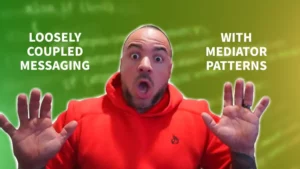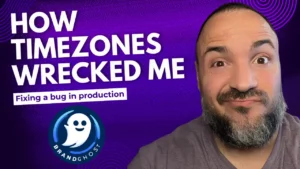I’m someone who constantly promotes building things as a way to improve as a programmer. However, one of the most common pieces of feedback I hear is “I don’t have any ideas for programming projects!”. This can be a huge barrier to feeling like you can get started, especially if you’re losing steam on just focusing on general theory.
The goal of this article is to give you some tools and systems for generating ideas for programming projects. By leaning into these, you should be able to get yourself unblocked and have a seemingly endless set of ideas for programming projects as you move forward.
And remember – this isn’t about focusing on the next multi-million dollar idea for a company. We’re just trying to brainstorm.
Why Having Ideas for Programming Projects is Ideal for Learners
As an individual looking to grow as a software developer, being able to build applications is one of the best ways to improve. Instead of channeling all of your energy into learning theoretical concepts, you get to apply what you’re learning to real-world situations. This has the added benefit that when it comes to working in a professional setting, you have experience working on software that needs to grow and evolve over time.
Generating ideas can be challenging though. In order to ensure that you can continue to work with new languages, technologies, or whatever other facet of software development that will give you a new challenge… it would help if you had ideas on what to build.
Many of us get bogged down with trying to think of a business need before starting a project. And while this can be great (who doesn’t want an opportunity to make money), it’s not really a core priority at this stage if you’re just starting out. You’d be better off thinking about applications that allow you to exercise the different concepts you want to reinforce. Later on, you can think of business ideas!
Having tools and processes to help you generate ideas for applications allows you to have more opportunities to work through. Instead of hitting a roadblock and feeling like “I don’t know what to make, so I’ll make nothing”, you can pick one and start!
Why Ideation Tools Are Important for Software Teams
Generating and pursuing new ideas is critical to success and continued growth in software development. For programmers, there is a constant need for ideation in order to stay ahead of the game. With a continuous flow of new and diverse ideas, software engineering teams can significantly improve their productivity and efficiency.
A steady stream of ideas gives development teams the advantage of being able to choose the best idea at the right time and set priorities that align with their goals. In addition to benefiting the development team, customers can also benefit from a never-ending flow of new ideas that enhance the overall user experience.
Staying inspired and generating ideas on a consistent basis can be challenging. The good news is that there are numerous techniques that you can use to get inspired and push boundaries. By cultivating an understanding of various techniques that stimulate creativity, you’ll be better equipped to generate new ideas.
Software development teams can run the risk of hitting a creative roadblock that can negatively affect project timelines and overall productivity. A lack of new and challenging ideas can lead to reduced morale and poor results. Therefore, it’s crucial to have a stream of ideas to ensure steady growth and success in software development.
Brainstorming Techniques
Brainstorming is a useful way to generate new ideas for your programming projects. It can help you come up with innovative features, unique solutions, and creative solutions to existing problems. One popular technique for brainstorming is mind mapping. Mind mapping is a visual brainstorming technique that allows you to gather your ideas in one place and easily organize them into a clear plan for your project.
How to Mind Map
Mind mapping is a structured brainstorming technique that helps you identify the relationships between your ideas and bring into focus how they relate to the problem you want to solve. With mind mapping, you can start out as broad or narrow as you like, building a concept map that covers any aspect of your project. It can be used as a tool for developing and organizing any type of project from a small program to a big software product.
To use mind mapping, first, write down the central idea or theme of your project. Then, from that central idea, branch out your thoughts and ideas, grouping them into related categories. Continue to branch out each group until you have a clear and detailed road map for your project. Mind mapping is an efficient way to see all of the different aspects of your project and identify potential pitfalls.
Aside from being a great tool for brainstorming and organizing ideas, mind mapping also has other benefits. Mind mapping is a creative process that stimulates the mind to think differently from traditional brainstorming. It helps in memorizing concepts, enables complex problems to take shape, and provides more structure to thought processes. With mind mapping, you can quickly assess your progress and see where to shift your focus to the next level, making it an ideal technique for improving with programming.
Research Your Competitors and Popular Platforms
One effective way to generate ideas for programming projects is to research your competitors and popular platforms in your market. This technique allows you to find inspiration for your project and identify gaps that need to be filled.
Identifying and Examining Products & Services
To begin your research, start by identifying the platforms and websites popular in your target market. Look for common themes, features, and functions and take notes on each. This exercise helps with brainstorming and gives you an idea of what your target market is looking for. Remember – you don’t need to be thinking of how to make a business out of this — it’s not the goal right now!
Next, examine your competition. Identify what they are doing well and where they fall short. Look out for features and functionality that your competitors are lacking, or are not doing as well as you think you can. Take notes on areas of improvement for your project and also note the elements, features or functionality that you can include in your project to make it stand out from the competition.
Decompose The Platforms
To ensure we’re not over-indexing on trying to create a competitor business, try to think about how the product or solution is implemented. How do you think they’re storing information in a database? How do they handle communication between different parts of the system? Try to decompose different aspects of their system and think about the different pieces involved.
It might be a great opportunity for you to try and model how their system is built so you can practice learning some of those technologies, patterns, or architectures. Conversely, you might look at how they’ve implemented their solution and say that you’d like to try a variation of this. In this way, you’re keeping one variable constant (the goal/purpose of the system), and the other variable you’re changing is either the technology or architecture being used.
Taking this approach is a great way to find inspiration for different project ideas. Even if it’s not a new idea, re-implementing something can be a great way for you to practice building.
Look at Open Source Code
When it comes to ideas for programming projects, open source code is an invaluable resource to tap into. Open source code refers to code that is freely available for use and modification, posted online for anyone to access. The benefits of using open source code for inspiration are many, including the ability to learn from others’ mistakes and successes, as well as being able to take advantage of existing code to speed up your own development time.
To find open source code for your project needs, you can start by searching popular code repositories such as GitHub, Bitbucket, and CodePlex. These sites offer a wealth of code from a variety of programming languages, including C#. You can also search for specific keywords related to your project idea to find relevant code samples.
It is important to note that while open source code is generally free to use and modify as needed, there may be legal implications to consider. Some open source licenses require that any modifications to the code be made available for others to use as well. It is crucial to review and understand the specific licensing terms for any open source code you plan to use in your project.
Find a Need in Your Community or Industry
When starting a programming project, it can be helpful to look for inspiration in your local community or industry. By looking for real problems that need solutions, you can create software that has practical applications and solves tangible issues.
To find these problems, start by researching your local community or industry. What are the common complaints or challenges that people face? What inefficiencies exist in the current processes? These can be great opportunities for software solutions. Once you have identified potential problems, you can then start gathering feedback from others in your community or industry. This feedback can come from online groups, social media, or public forums.
Posting your ideas and requests for feedback can help you get in touch with a wide range of people who can provide valuable insights into your project’s direction. As you begin to get feedback, be sure to keep careful track of what people are saying. This information can be invaluable when developing your ideas and creating your software.
Consulting with different online groups in your industry can also be a great way to get inspiration and ideas. These groups can help you understand the latest trends and challenges in your industry, providing you with invaluable data points for your project. Leveraging these approaches might not give you ideas on what technologies to go use, but they might give you inspiration about the types of problems to solve.
Sparking Creativity with AI for Your Ideas For Programming Projects
If you’re still struggling with what to code next then AI tools like ChatGPT can be a helpful friend. You can ask ChatGPT for project ideas, and it can give you a bunch of suggestions. For instance, if you’re learning C# and want to try different technology stacks, just ask! Whether it’s a web app, a game, or a useful tool, ChatGPT can provide ideas.
Here’s how it could work: You ask ChatGPT, “What’s a fun project in C# to improve my database skills?”. It might suggest creating a personal budget tracker or some other purpose-built application. This takes the creativity roadblock out of the equation for you. You can jump right into actually building so you’re not wasting time with a roadblock
You can tune this even more if you have particular areas you’d like to improve in. Ask ChatGPT about a good beginner application to build that can leverage a plugin architecture. Or maybe you could ask ChatGPT about an easy Blazor application that you could try building. Whatever your area of focus, you can tailor the prompt so that ChatGPT helps you get over those creative hurdles.
Now Go Generate Ideas For Programming Projects!
In conclusion, generating ideas for programming projects is incredibly helpful for getting you to a point where you can practice coding. Brainstorming techniques, researching competitors and popular platforms, looking at open source code, and finding needs in your community or industry are all ways to get inspired and stimulate creative thinking. Try different techniques that will allow you to come up with new ideas, including leveraging ChatGPT!
Don’t be afraid to experiment with different tools and techniques, as well as consult with peers in your industry to gather feedback and ideas. The ability to come up with fresh and innovative ideas will set you apart from other people — whether that’s in your ability to practice on your own, or when it comes to problem-solving in a team.
Keep practicing and don’t become complacent as you develop and refine your skills in generating ideas for programming projects! If you’re looking for more inspiration, subscribe to my weekly newsletter! You can also check out my YouTube channel for more videos to help you in your software engineering journey.



